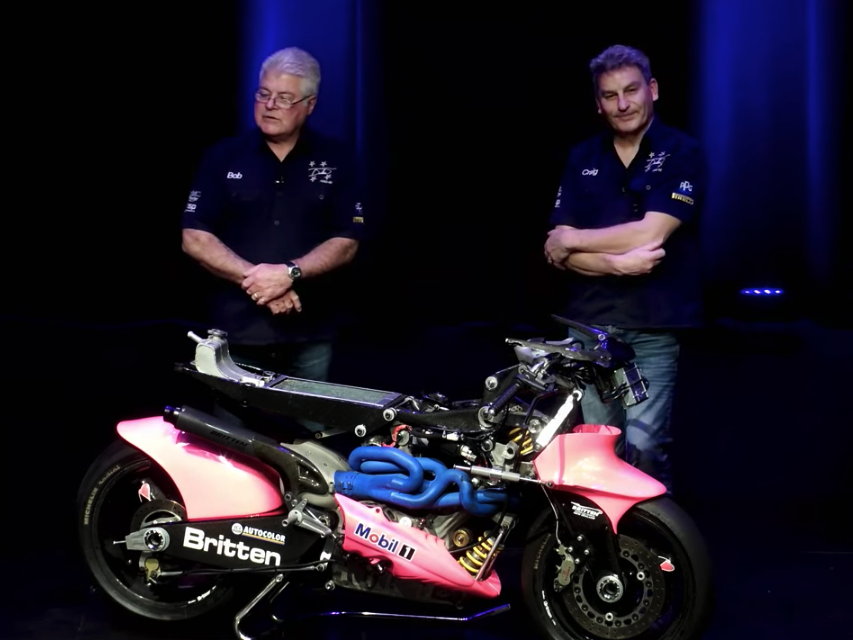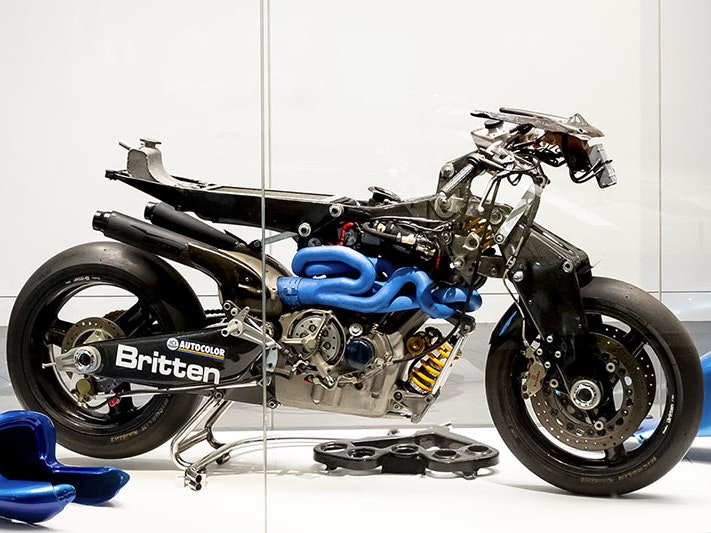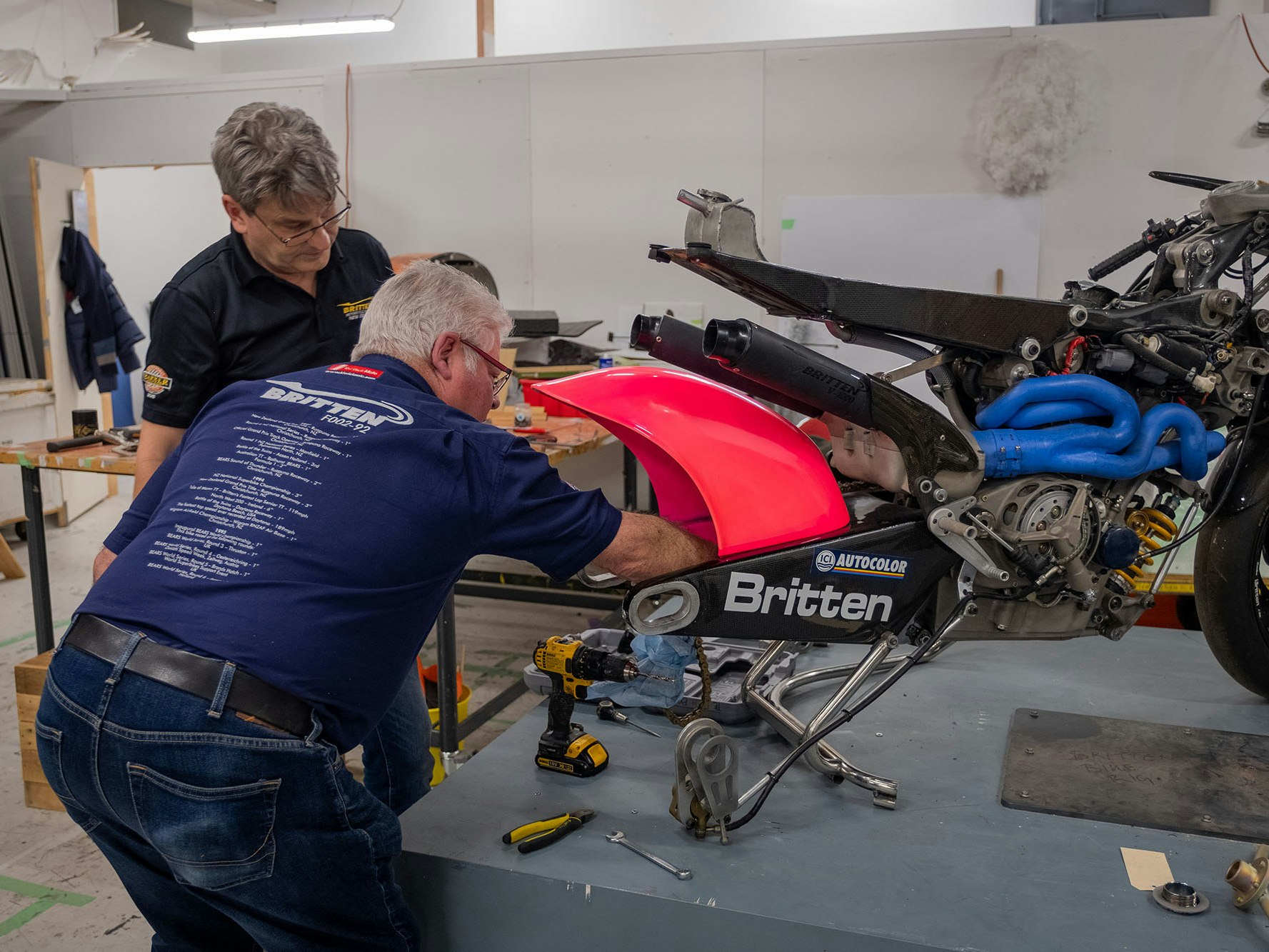
Watch: The Britten Bike with Bob Brookland and Craig Roberts
Bob Brookland and Craig Roberts share their memories of John Britten and explain what makes his world-beating motorbikes so unique.
Free museum entry for New Zealanders and people living in New Zealand
Open every day 10am-6pm
(except Christmas Day)
Free museum entry for New Zealanders and people living in New Zealand
See the record-breaking Britten V1000 motorbike, designed and built by Kiwi genius John Britten.
Long-term display
Level 4
Free with museum entry
All ages
5 minutes
The Kiwi-made Britten V1000 isn’t just good-looking – it’s won a string of trophies and broken several records. In 1993, it set the World Flying Mile Record for motorcycles 1000cc and under, reaching 302 kilometres per hour.
Among his many interests, Christchurch designer John Britten was a keen motorbike racer. He had a burning ambition to build his own racing bike. He started out by modifying the bodywork of his Ducati racer. He ended up designing a completely new bike.
It took him almost 12 years to develop the Britten bike we have in our collection. In the racing world, it’s in the class of twin engine ‘superbikes’. This is a class of bike in which it is still possible for private individuals to design, engineer, and race their own machines in competition with large manufacturers.
Racing bikes are built for speed – outright speed on the straight, speed with manoeuvrability round corners, rapid acceleration, rapid deceleration. John Britten looked for ways to make his machine go faster, in the mechanics and the aerodynamics.
In the mechanics, he designed his own engine from scratch. Some specialist parts from other bike manufacturers were used, but most of the parts were made locally. He installed a computer on board that could monitor and record six different mechanical functions.
For the aerodynamics, he made the bike lighter and more streamlined. He took weight off in his materials – he made the frame, the wheels, and the bodywork out of carbon fibre and Kevlar. He did away with a framework chassis to keep the front and rear wheels in line. Instead, he beefed up the strength of the metal in the engine castings so they could do the chassis’s job. The rear wheels are connected to the crankcase.
He took the radiator away from its usual position in front of the engine, and tucked it under the seat where it couldn’t disturb air flow. Air is fed to the radiator from ducts. The engine is wonderfully compact – the same width as the tyres, so it offers minimal air resistance.
He designed the front suspension in a radical double wishbone shape, so the bike could corner faster. The front suspension has a wide range of adjustments possible.
When the bike first appeared on international racetracks in 1990, it caused a real stir among the racing bike fraternity. Its design features were visually arresting, but the power and flexibility of its performance drew even more comment. Most amazing of all, this bike was the product of an individual designer, assisted by a small band of racing bike enthusiasts, labouring in a garage-workshop in New Zealand, remote from any of the giant manufacturers of motorbikes.
Since 1990, the Britten V1000 has figured among the winners and placegetters in contests at many of the world-famous racing bike venues – Daytona, Assen, Monza, Brands Hatch, to name a few. In 1995, Britten bikes took first and second place overall in the BEARS World Championship. In 1996, a Britten bike was first overall in the New Zealand National Superbike Championship.
Since John Britten’s death in 1995, the company that he formed to develop, manufacture, and sell the bike has continued the Britten tradition of excellence.

Bob Brookland and Craig Roberts share their memories of John Britten and explain what makes his world-beating motorbikes so unique.

A collection of photos showing the deinstallation of the Britten V1000, giving you access to parts of the bike rarely seen.


This ground-breaking exhibition tells the story of the Gallipoli campaign in World War I through the eyes and words of eight ordinary New Zealanders who found themselves in extraordinary circumstances.
On now
Long-term exhibition
Exhibition Ngā whakaaturanga